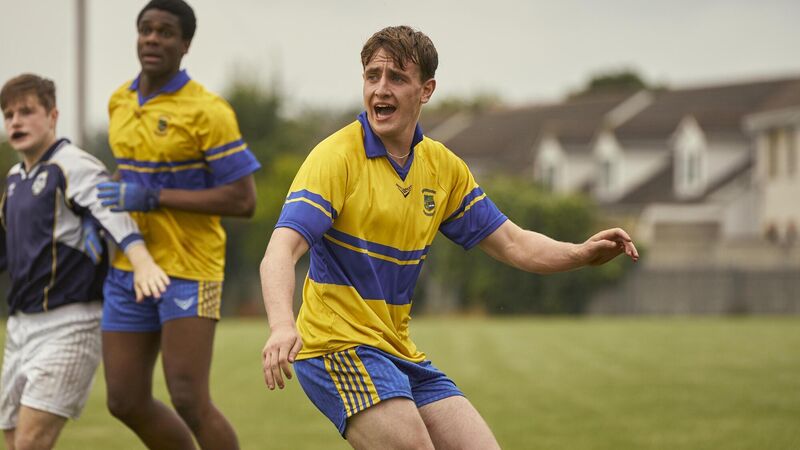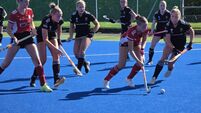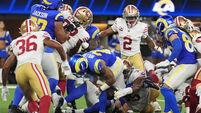Colin Sheridan: Time we were aware normal people suffer invisible pain

NORMAL PEOPLE: Paul Mescal in action as Connell. Pic: Enda Bowe
In her portrayal of two young Irish people dealing with the excruciating transition from teenage years to adulthood, novelist Sally Rooney caught the world's attention. Her second book, , sold hundreds of thousands of copies, and the TV adaptation became a phenomenon. It seems a lifetime ago, but in the earliest lockdown days of Coronavirus, the trials and tribulations of Connell and Marianne, two conflicted friends and lovers from the West of Ireland, dominated not just the pop-cultural discourse, but the conversation around a myriad of social issues that were heretofore verboten in Irish homes.
Once we ceased our sniggering about “scenes of a sexual nature”, we were left with a constructive study on consent, psychological control, and abuse. We also had a portrait of a young man dealing with the demons rampant in his own head, obscured from everyone else.
Connell, the male lead played by Paul Mescal, was that nuanced enigma we know all too well, as every parish has one. A young man, much loved. A great footballer and the most popular lad in school. Intelligent, handsome and considerate. The envy of his peers, he seems to have it all. The show, shot in sepia-tinted golden light, was one of those rare instances of a television adaptation complementing an already brilliant book. Many scenes are jarring, as much for what goes unsaid as for what’s explicitly obvious. In one episode, Connell is carried shoulder-high by his adoring teammates. Later, in college, still the same person, but very much a different version of himself, he lies prone on his bedroom floor, paralysed by an invisible and unexplained anxiety.
Like many cynical fools, I railed against the Normal People hype for a while, somehow certain that I knew better than a bestselling author and master storyteller when it came to, you know, feelings and emotions. I had cause to revisit Rooney’s seminal work recently, and, lest I needed reminding, I was struck by how on-the-nose her subtle observations of human behaviours actually were. Furthermore, we could all learn from revisiting them.
It was the cruellest of coincidences that Normal People was filmed and shot in Sligo, a county and community crippled with sadness earlier this year at the loss of one of their most beloved young sons, Red Óg Murphy. He was 21 years of age when he died, a young man all too familiar with being carried, like the fictional Connell, shoulder high from football fields, the envy of his peers.
He had achieved much in his short life. As a Leaving Cert student he travelled to Australia to take up a rookie contract with AFL side North Melbourne. His sojourn down under lasted eight months. Upon his return he settled back into school at St Attractas in Tourlestrane. He took the brave decision to come home himself, with his family's support. Brave decisions were something he was well rehearsed in. Despite his prodigious talent, he opted out of the Sligo senior football campaign this season to concentrate on his studies. As the team's brightest talent, imagine the pressure he must have felt to go against his gut and play anyway? It makes the pain of his passing all the harder to comprehend.
I thought of Rooney’s depiction of a young man with the brightest of futures when I read Malachy Clerkin's heartbreaking piece in last Saturday's about Murphy. In it, Clerkin spoke to Red Óg's parents, mentors and friends, as he painted a picture of a young man anybody would be proud to call brother, friend, student.
When Normal People aired, it was the sex that set tongues wagging, but the skill with which Rooney painted the picture of young people struggling with the invisible aspects of their lives is what endures.
The great adventure of college is billed as the “best days of your life”, but for so many, they are the hardest. How many young people laugh loudest and longest in the college bar only to later lie prone, paralysed on bedroom floors, or rooted to the spot outside lecture halls, unable to enter for no rational reason? Being a star athlete or a Grade A student or a beauty queen exempts nobody from such potentially destructive afflictions. Being Irish, famously impervious to psychoanalysis - something we often wear as a badge of honour - often only adds to the insidious mix.
Like many, I only knew of Red Óg Murphy through the highlight reels. His athleticism and natural ability beautifully personified by a wand of a left foot. There was something about the name, too, that drew you in. You can’t be called ‘Óg’ and not be brilliant, it seems. And he was that. His performances for DCU this year earned him a place on the Sigerson Team of the Year. How revered he must have been by his old schoolmates, who no doubt looked at him like he had it all figured out.
As a society, we have never been more acutely aware of the struggles young people face as they navigate the formative years of their lives, yet, for all the awareness, we remain seemingly incapable of preventing the worst from happening when it sadly does.
The sofas of talk shows are populated by countless honourable examples of people telling stories of their journeys from darkness into light. Without doubt, they serve a valuable purpose. So too, I think, is showing young men and women Normal People. It’s one thing hearing the story after, told by the slayer of the demons, it’s quite another sitting uncomfortably, and watching something that may seem all too real unfold on a screen.
Understanding how normal it really is may matter more than we think.
***
Working for BBC covering the Wales v Iran World Cup game, Jurgen Klinsmann got himself into some trouble by seeming to belittle Iranian football. Or Iranian culture. Or Iranian footballing culture. To be fair to Klinsmann, English is his second language, and by “culture”, he likely meant “style of play”, so there is an element of uncertainty as to whether the greatest diver since Greg Louganis was committing the crime of smug superiority as a white westerner or just a smugly superior footballing white westerner.
There was no doubt, however, about his belittling of the Iranian coach, Carlos Queiroz, the Portuguese who has made a name for himself as mentor of emerging - and re-emerging - football nations. Some may see Quireoz’s shtick as just a good footballing man spreading the holy Word.
Others, like Klinsman, clearly see a mercenary posing as a missionary. On Queiroz…”(he) struggled in South America, he failed to qualify with Colombia and then he failed with Egypt to qualify and then he went back and guided Iran, who he worked with for a long, long time. So this is not by coincidence, this is done on purpose”.
The “this” in this instance was nothing more offensive than Iran playing like 1 Diego Simeones - niggling Welsh opponents, surrounding the hapless referee at every opportunity, time-wasting - basically acting like a team willing to do anything to atone for the humiliation suffered at the hands of England in their opening game. It worked. The Iranians, a team arguably under more pressure than any other at this World Cup (albeit a far more authentic pressure due to the mass civil unrest at home which has seen the players cast in an impossible and very perilous position), beat the Welsh 2-0, setting up a showdown with team USA, a fixture which, should the Stars and Stripes prevail, will undoubtedly see a Clint Eastwood directed movie win multiple Oscars, with Klinsmann in a starring role.
Some philosophical questions abound after week one of an entertaining World Cup; chief amongst them - where have all the strikers gone? England has Harry Kane, and, on the evidence of their showing against the US, nobody else. Germany has nobody. Nor Spain nor Portugal or Belgium or the Netherlands. Outside of Kylian Mbappé and an ageing Robert Lewandowski, there is a dearth of strikers in the game that makes you wonder if today's footballers are over-coached, especially as kids? Has football's industrial revolution, with its academies acting as mass-producing factories, finally rendered obsolete the street baller? Let's hope the next fortnight proves me wrong.
Kellie Harrington added another belt to her impressive collection, winning Irish Sports Book of the Year at the 2022 An Post Irish Book Awards. A worthy winner, her book, Kellie (with Roddy Doyle) brings the reader on a journey through the Dubliner's upbringing to the Tokyo Olympics and her gold medal. In the same category was Tadgh Coakley’s magical ode to sport , less a book, more a heartbreaking love letter to life and love and family and community. A relatable story told through the eyes of a poet. In other words, a perfect Christmas present.






